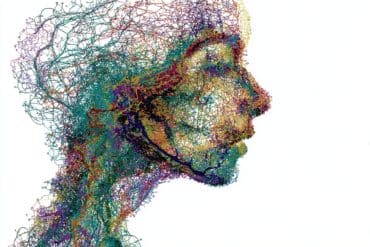Summary: A new study sheds light on how the brain helps us to learn and make decisions in the real world.
Source: Princeton University.
The Wizard of Oz told Dorothy to “pay no attention to that man behind the curtain” in an effort to distract her, but a new Princeton University study sheds light on how people learn and make decisions in real-world situations.
The findings could eventually contribute to improved teaching and learning and the treatment of mental and addiction disorders in which people’s perspectives are dysfunctional or fractured.
The study appears in the journal Neuron.
The researchers studied how we learn what to pay attention to in order to learn more effectively — that is, to make the most of life experiences — assuming that in real-life situations most of what is going on is irrelevant and shouldn’t be learn about. For example, when you order something new in a restaurant – perhaps anchovy pizza — you should learn whether you like or dislike anchovy pizza, rather than attribute the pleasurable experience to the particular table you’re sitting at. Or when crossing a street, you should pay attention to the speed and direction of oncoming traffic, while the colors of cars can be safely ignored.
Participants in the study performed a multidimensional trial-and-error learning task, while researchers scanned their brains using functional magnetic resonance imaging (fMRI). The researchers found that selective attention is used to determine the value of different options. The results also showed that selective attention shapes what we learn when something unexpected happens. For example, if your pizza is better or worse than expected, you attribute the learning to whatever your attention was focused on and not to features you decided to ignore. Finally, the researchers found that what we learn through this process teaches us what to pay attention to, creating a feedback cycle — we learn about what we attend to, and we attend to what we learned high values for.

“If we want to understand learning, we can’t ignore the fact that learning is almost always done in a multidimensional ‘cluttered’ environment,” says senior author Yael Niv, an associate professor in psychology and the Princeton Neuroscience Institute. “We want kids to listen to the teacher, but a lot is going on in the classroom — there is so much to look at inside it and out the window. So, it’s important to understand how exactly attention and learning interact and how they shape each other.”
Most research has looked at “exogenous” attention, or things that capture our attention automatically such as a loud noise or flash of light. But Niv and her colleagues are interested in “endogenous” attention, or how we choose to pay attention to the environment in order to maximize what we learn from each experience, and what processes shape those internal decisions of what to attend to.
The study included first authors Yuan Chang Leong and Angela Radulescu.
Source: John Cramer – Princeton University
Image Source: NeuroscienceNews.com image is credited to Princeton University.
Original Research: Abstract for “Dynamic Interaction between Reinforcement Learning and Attention in Multidimensional Environments” by Yuan Chang Leong, Angela Radulescu, Reka Daniel, Vivian DeWoskin, and Yael Niv in Neuron. Published online January 18 2017 doi:10.1016/j.neuron.2016.12.040
[cbtabs][cbtab title=”MLA”]Princeton University “How the Human Brain Decides What Is Important and What’s Not.” NeuroscienceNews. NeuroscienceNews, 18 January 2017.
<https://neurosciencenews.com/importance-neuroscience-decisions-5967/>.[/cbtab][cbtab title=”APA”]Princeton University (2017, January 18). How the Human Brain Decides What Is Important and What’s Not. NeuroscienceNew. Retrieved January 18, 2017 from https://neurosciencenews.com/importance-neuroscience-decisions-5967/[/cbtab][cbtab title=”Chicago”]Princeton University “How the Human Brain Decides What Is Important and What’s Not.” https://neurosciencenews.com/importance-neuroscience-decisions-5967/ (accessed January 18, 2017).[/cbtab][/cbtabs]
Abstract
Dynamic Interaction between Reinforcement Learning and Attention in Multidimensional Environments
Highlights
•Attention constrains reinforcement learning processes to relevant task dimensions
•Learned values of stimulus features drive shifts in the focus of attention
•Attention biases value and reward prediction error signals in the brain
•Dynamic control of attention is associated with activity in frontoparietal network
Summary
Little is known about the relationship between attention and learning during decision making. Using eye tracking and multivariate pattern analysis of fMRI data, we measured participants’ dimensional attention as they performed a trial-and-error learning task in which only one of three stimulus dimensions was relevant for reward at any given time. Analysis of participants’ choices revealed that attention biased both value computation during choice and value update during learning. Value signals in the ventromedial prefrontal cortex and prediction errors in the striatum were similarly biased by attention. In turn, participants’ focus of attention was dynamically modulated by ongoing learning. Attentional switches across dimensions correlated with activity in a frontoparietal attention network, which showed enhanced connectivity with the ventromedial prefrontal cortex between switches. Our results suggest a bidirectional interaction between attention and learning: attention constrains learning to relevant dimensions of the environment, while we learn what to attend to via trial and error.
“Dynamic Interaction between Reinforcement Learning and Attention in Multidimensional Environments” by Yuan Chang Leong, Angela Radulescu, Reka Daniel, Vivian DeWoskin, and Yael Niv in Neuron. Published online January 18 2017 doi:10.1016/j.neuron.2016.12.040






